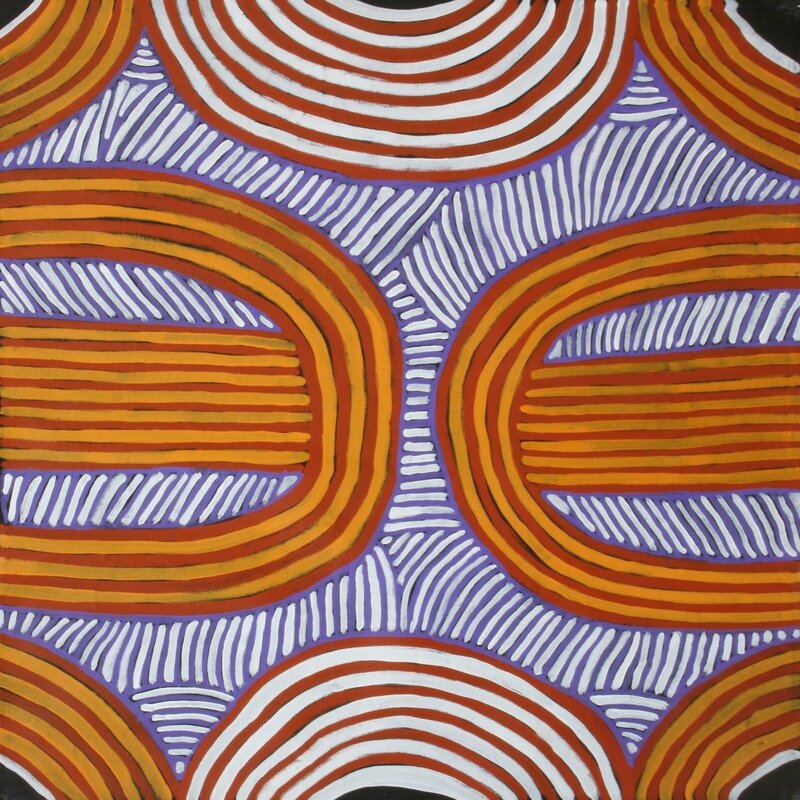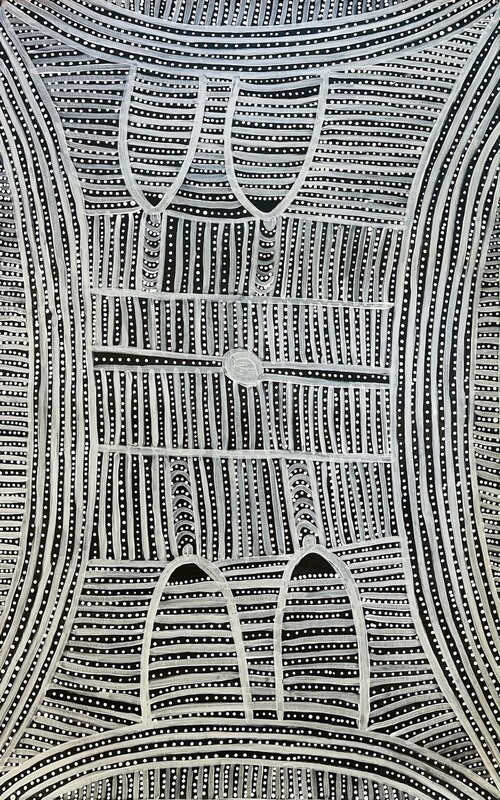Ada Bird Petyerre
Born on the old Utopia station at Atangkere, Ada Bird Petyarre was a significant contributor of one of the most important art movements to emerge from the desert – “ the Utopia Women ”. As one of the senior women at Utopia and a traditional Anmatyerre elder (her country was Atnangkere), Ada took her cultural obligations very seriously which is reflected in her artworks that depict her Dreamings and the women’s ceremonies associated with them. Her works included Arnkerrthe (Mountain Devil Lizard), Unyara (Emu), Engcarma (Bean), Annlara (Pencil Yam), Kadjera (Grass Seeds), and Elaitchurunga (Small Brown Grass) Dreamings, that she shares with Gloria Petyarre and Emily Kame Kngwarreye and other women artists from the Utopia region.
Ada comes from a large family, one of seven sisters; Kathleen, Gloria, Myrtle, Violet, Nancy and Jean, all of whom were also notable artists. Ada also had six children of her own, two daughters June and Hilda and four sons, Paddy, Colin, Stephen and Ronnie.
Living at Mulga Bore (Akaye Soakage), Ada was involved with the Utopia Women’s Batik group in the late 70’s, where her work was exhibited and now held in major collections in Australia and internationally, as well as being featured on the cover of the publication “Utopia – A Picture Story” (1990), a book based on an exhibition of 88 works on silk by the Utopia artists which toured Eire and Scotland. The German filmmaker, Wim Wenders acquired one of her batiks and gave the artist a role in one of his films, that was partially shot in Central Australia.
Ada subsequently began painting with acrylics in 1988 during the CAAMA (Central Australian Aboriginal Media Association) Summer Project. In late ’89 the National Gallery of Australia in Canberra acquired a major canvas, and her works were soon to be added to many public and private collections.
In 1990 Ada had her first solo exhibition at Utopia Art in Sydney. Her work also appeared in the publication The Art of Utopia, M. Boulter, (Craftsman House, Sydney, 1991).
Ada’s talent was obvious and she had a unique style, leaving a legacy of works that range from delicate, others with strong bright colours and bold linear patterns. She also painted in the more traditional and subdued colours, her favoured works being based on the women’s ceremonial body paint designs (awelye) for the Mountain Devil Lizard (Arnkerrthe).
Ada suffered a stroke in 2004 that ended her career in painting, and was cared for in Alice Springs until her passing in June 2009.


